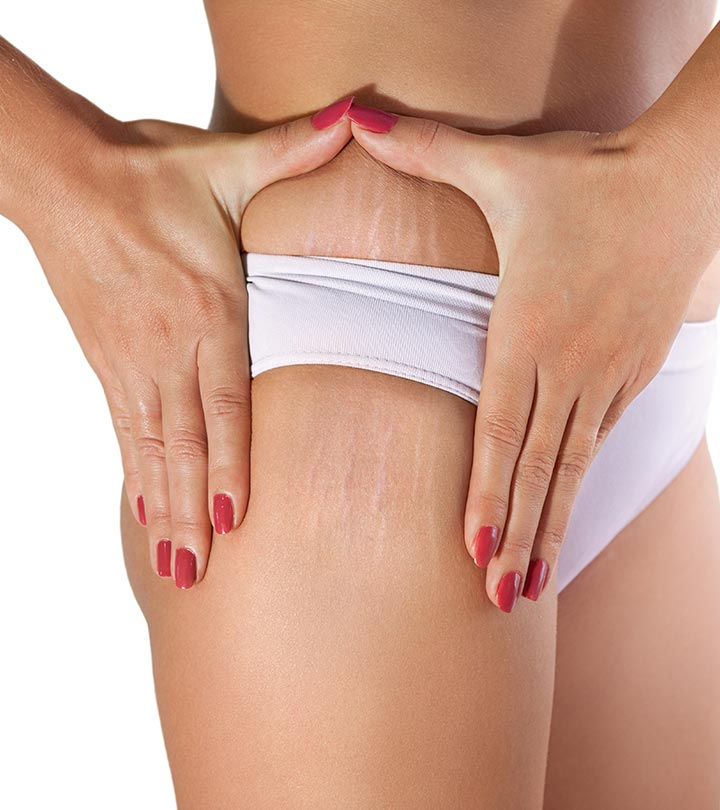
Stretch marks are a common skin concern that many people experience due to factors like rapid weight changes, pregnancy, or hormonal fluctuations. These marks can affect one's confidence and cause discomfort due to their appearance. While there are various treatments available, laser stretch marks removal in Dubai (إزالة علامات التمدد بالليزر في دبي) has become one of the most effective methods to reduce the visibility of these marks and improve skin texture. In this article, we’ll explore how laser technology works for stretch marks and why it’s becoming a popular choice.
Understanding Stretch Marks and Their Causes:
Stretch marks, or "striae," occur when the skin is stretched beyond its limit, causing the collagen and elastin fibers in the dermis to break down. This results in the appearance of linear streaks or lines, often in shades of purple, red, or white. The most common causes of stretch marks include pregnancy, rapid weight loss or gain, puberty, and certain medical conditions.
These marks typically appear on areas like the abdomen, thighs, hips, breasts, and arms. While they are not harmful, they can be unsightly and lead to emotional distress, making people look for ways to minimize their appearance. Laser treatments offer a promising solution, and in particular, laser stretch marks removal is known for delivering results that help reduce both the texture and color of the marks.
How Laser Technology Works:
Laser technology uses light energy to target specific areas of the skin, stimulating natural healing processes. In the case of stretch marks, lasers work by promoting collagen production in the dermal layer. When a laser is applied to the skin, it creates controlled micro-damage to the affected areas. This process triggers the skin’s repair mechanisms, stimulating the production of new, healthy skin cells and collagen fibers. Over time, this helps to smooth out the skin and reduce the appearance of stretch marks.
The key advantage of laser treatments is their precision. The laser can be focused on specific areas, ensuring that only the stretch marks are affected while leaving the surrounding healthy skin untouched. This level of control allows for more targeted and effective treatment.
Different Types of Lasers for Stretch Marks Removal:
There are several types of lasers used for stretch marks removal, each with its unique benefits and capabilities. Some of the most common lasers include
Fractional CO2 Laser: This laser is known for its effectiveness in treating deep stretch marks. It works by creating tiny channels in the skin, which stimulate collagen production and help to improve skin texture and tone.
Pulsed Dye Laser (PDL): The PDL is ideal for treating red or purple stretch marks. It targets blood vessels beneath the skin’s surface and helps to reduce the redness, leading to a more even skin tone.
Erbium YAG Laser: This laser is effective for both superficial and deep stretch marks. It targets the skin’s surface to remove damaged tissue, promoting the formation of new, healthy skin.
Each type of laser has its specific application depending on the stretch marks' age, color, and severity. It’s important to consult with an experienced professional to determine which laser treatment is best suited for your needs.
Benefits of Laser Stretch Marks Removal
Laser treatments offer several benefits when it comes to treating stretch marks. These include:
Precision and Efficiency: Lasers can focus on specific areas, ensuring that the treatment targets only the stretch marks, leaving the surrounding skin intact. This leads to more effective results with minimal side effects.
Minimal Downtime: Unlike some other treatments, laser stretch marks removal typically requires very little recovery time. Most people can return to their daily activities shortly after the procedure, with just a bit of redness or swelling, which usually subsides within a few hours or days.
Non-Invasive: Laser treatments are non-invasive, meaning there’s no need for surgical procedures or incisions. This makes them a safe and less risky option compared to traditional methods like surgery.
Improvement in Skin Texture: Beyond just reducing the appearance of stretch marks, lasers also help improve the overall texture of the skin, making it smoother and more even.
Long-Lasting Results: Once the healing process is complete, the results from laser treatments can be long-lasting, providing a more permanent solution for stretch marks than topical creams or lotions.
What to Expect During a Laser Stretch Marks Removal Treatment:
The laser stretch marks removal procedure is typically quick, lasting between 15 to 30 minutes depending on the size of the treatment area. Before the treatment begins, a topical anesthetic is applied to numb the skin and ensure comfort throughout the process.
Once the skin is numbed, the laser is passed over the stretch mark areas. You may feel a slight tingling or warmth during the procedure, but it’s generally well-tolerated. After the treatment, the skin may appear slightly red or swollen, similar to a mild sunburn, but this typically fades within a few hours.
While the number of sessions required depends on the severity of the stretch marks, most individuals require multiple treatments to achieve optimal results. A treatment plan tailored to your skin's unique needs will be discussed during your consultation.
Post-Treatment Care and Recovery:
After your laser treatment, it’s essential to follow proper aftercare to ensure the best possible results. This includes:
Moisturizing the Skin: Keeping the treated area hydrated is crucial for promoting healing and maintaining skin health. Use a gentle moisturizer to prevent dryness.
Sun Protection: Avoid direct sun exposure for several weeks after the procedure, as the treated skin will be more sensitive to UV rays. Apply a broad-spectrum sunscreen with a high SPF to protect the area.
Avoiding Scratching or Picking: The skin may peel or flake after the procedure, but it’s important not to pick at it. Let the skin heal naturally to prevent scarring.
Follow-Up Treatments: For the best results, multiple sessions may be needed. Be sure to follow the recommended schedule for follow-up treatments to maximize the benefits of the laser therapy.
Conclusion:
Laser stretch marks removal has revolutionized the way people treat and manage stretch marks. With its ability to precisely target affected areas, stimulate collagen production, and improve skin texture, laser technology offers an effective solution for those looking to reduce the visibility of stretch marks. Whether you have fresh, red stretch marks or older, faded ones, laser treatments can provide noticeable improvement, helping you regain smooth, even-toned skin. So, if you're seeking a reliable and long-term solution for stretch marks, laser stretch marks removal might be the right choice for you.













